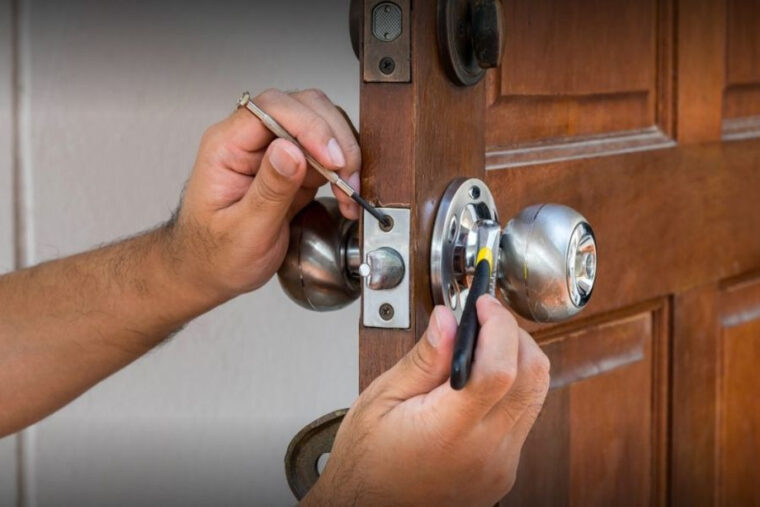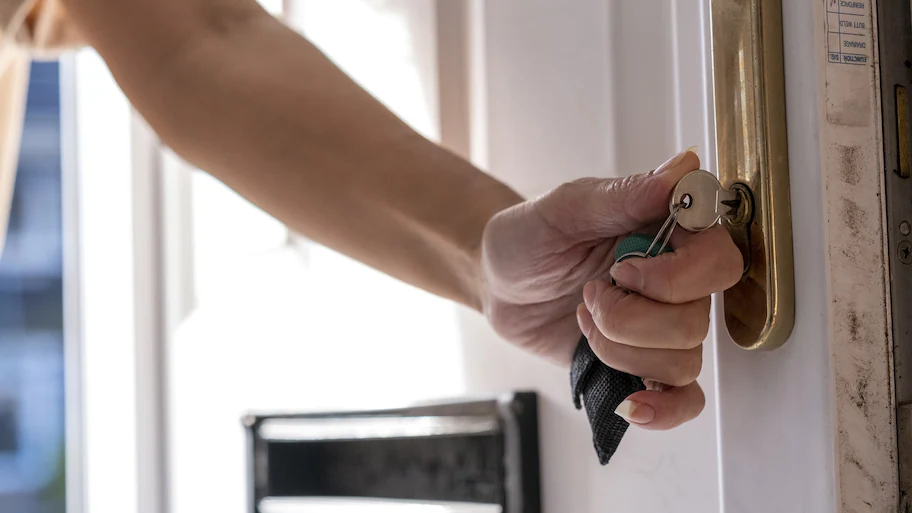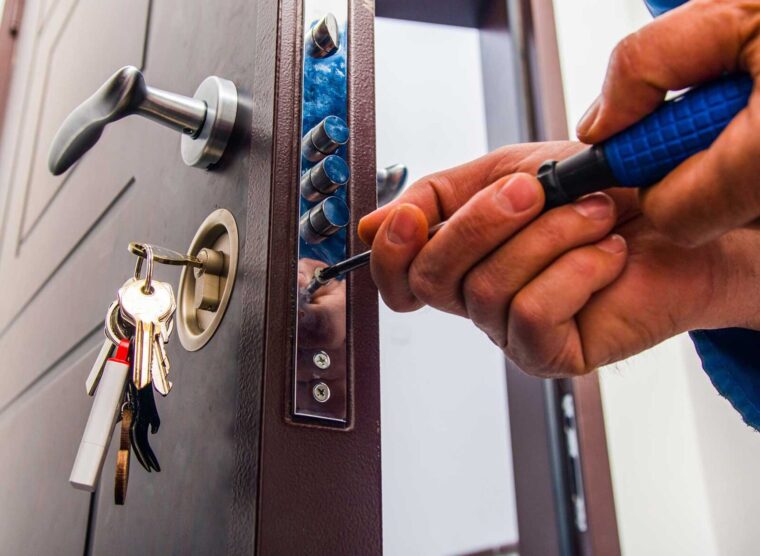When you are locked out of your house, lock picking, that is, trying to unlock the door by manipulating the parts of the lock without the original key, may look tempting. However, it is never a good idea to fix or manipulate the components of a lock when you do not have the necessary expertise.
A professional locksmith has years of experience handling different locks and keys. So, if you are stuck in an unfortunate situation where you are locked out of your house, you should contact a locksmith St Louis near you.
What Exactly Is Lock Picking, And Why Should You Avoid It?

Many professional locksmiths adopt lock picking when trying to unlock a door or a shelf. After reading this blog post, you will come to know what the different tricks adopted by locksmiths are and why an amateur should stay away from adopting those tricks.
Use Of Skeleton Keys
Skeleton keys are those that have a very simple structure, and the biting at the very end can be manipulated quite easily. While the pattern of edges can also be adjusted with some effort, the other components of the skeleton key, the grooves etched on the body of the key, are specific. So, the type of lock that they can fix is limited by the nature of the grooves, while the terminal end can be fixed with slight modifications.
Use Of Tension Wrenches
A tension wrench is used to apply torque to the plug of a lock to turn it and eventually open the door or safe.
Use Of Hook Picks
They are one of the simplest types of equipment that can be used to open a door or a safe that is stuck. The end of the pick is shaped like a hook, and the other end, which is used to rotate the hook at the terminal end, can be of varying sizes.
These are some of the common techniques used by professional locksmiths to unlock a door or a safe. But as you can see, these picks are quite complicated, and using them without having adequate knowledge is not only a waste of your time, but it may end up doing more harm than good.
Why Trying To Fix The Locks Of Your House All By Yourself Does No Good

If something in your house stops functioning or if you are locked out of your house, it might seem tempting to fix everything on your own. After all, twisting a hairpin and inserting it into the keyhole looks like a simple and trivially time-consuming affair. However, when you do not know the tricks of the trade, all your efforts at applying a do it yourself or DIY solution to your locked door will end in failure for the following reasons.
Lack Of Professional Expertise
Every person, be it a doctor, a locksmith, or a car mechanic, is specifically trained to perform their job. A lock, for instance, has multiple internal components that a layman may not be aware of. A common door lock, for instance, has a chassis, a face plate, a latch bolt, a cylinder, etc.
However, only the outer keyhole and the knob used to push open the door are visible to a layman.
So, it would not be wrong to say that a layman is aware of only two or three components of a locking system, whereas the whole system may have more than ten or twenty parts. Thus, with half-baked knowledge, it is quite possible that a layman will end up damaging two or more components in an attempt to repair one faulty component.
Also, since a layman does not even know the names of different components, he will not be able to pinpoint a problem that runs deeper than the external structure of the key.
Lack Of Experience
When a person handles keys day in and day out, he has some intuitive idea of what may have gone wrong. For instance, if you cannot insert a key in a hole during the winter or if you cannot turn the keys, the problem might be that of sticky locks. In winter, when the ambient temperature drops too much, any moisture that gets inside the keyhole might get frozen.
The frozen moisture jeopardizes the entire system, and if you use too much force, it will end up damaging some internal components.
If you are stuck in a situation where a part of the key is stuck inside the keyhole, removing the broken part will require a whole lot of experience. Even if a minor component is left inside, the system will not function properly.
Hence, when you try to fix everything using a DIY (do it yourself) video on the internet, you may end up wasting more time. Also, if you damage some component in the process of experimenting, you will have to buy a new component, and you will waste money.
What To Do When Hiring A Professional Locksmith?

There are several reasons why you should not try your luck for long when it comes to keys. At the most, you can try and use some oil or lubricant to remove moisture, but if it does work, you must consult an expert. Moreover, when you have a smart key (a programmable one) for a safe, it is best to seek professional help.
When hiring a professional, ask for his identity proof so that the molds used to make a new key are not misused later in some way. Also, check for online customer reviews to get satisfactory service. And if you need quick service, hire someone who is available and can help you out within hours.
Conclusion
In conclusion, it can be said that using DIY (do it yourself) tricks and tips is fine as long as you do not end up jeopardizing the entire system. When you think you do not have the necessary expertise to handle a dysfunctional system, it is best to contact a professional.
